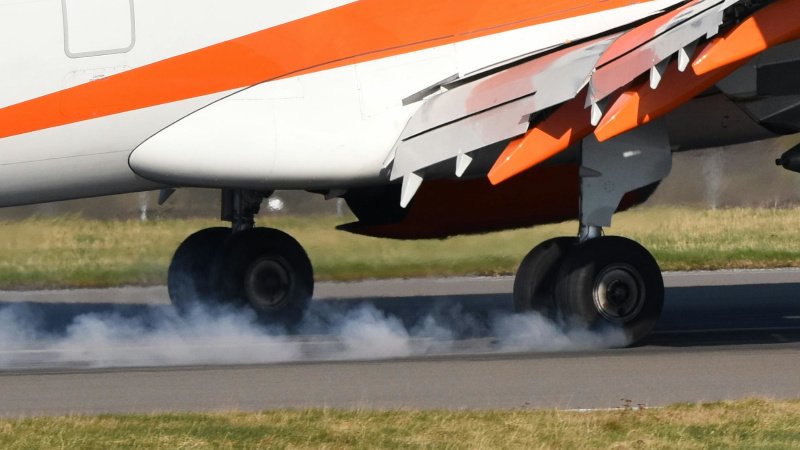
Aircraft Tire Ply Rating
What is Aircraft Tire Ply Rating
Great question — the ply rating on aircraft tires is often misunderstood, so let’s go step by step.
What is “Ply Rating” on Aircraft Tires?
- The ply rating is NOT the actual number of plies (layers) inside the tire.
- Instead, it’s an index of strength — a standardized measure that indicates how much load-carrying capacity the tire has compared to a baseline tire with cotton plies (the original standard).
- For example, a 12-ply rated tire may only have 6 actual nylon or Kevlar plies, but those plies are much stronger than cotton.
In simple terms: Ply Rating = relative strength classification.
How Ply Ratings Work in Practice
- Higher ply rating = stronger casing, higher load capacity, higher inflation pressure.
- Aircraft tires must carry enormous weight at very high speeds. For instance:
- A Boeing 737 main gear tire might have a 26–32 ply rating, inflated to 200+ psi.
- A light Cessna tire might only have a 6–8 ply rating, inflated to ~40–60 psi.
- A Boeing 737 main gear tire might have a 26–32 ply rating, inflated to 200+ psi.
- The ply rating, along with speed rating and tire size, determines where that tire can be used safely.
Are There “Good” or “Bad” Ply Ratings?
- It’s not about “good” or “bad” — it’s about appropriate for the aircraft.
- Too low a ply rating: the tire may not support the aircraft’s weight or may fail under load.
- Too high a ply rating: makes the tire stiffer, heavier, and less shock-absorbing, which can transfer more stress to the landing gear.
- Too low a ply rating: the tire may not support the aircraft’s weight or may fail under load.
Aircraft manufacturers specify the correct ply rating for each position (main gear, nose gear, etc.) in the Aircraft Maintenance Manual (AMM) and Illustrated Parts Catalog (IPC).
How Do the Plies Stabilize the Tire?
- Cross-laid bias plies (in bias tires): Each ply is set at an angle (e.g., +30° and −30° to the centerline). The alternating angles cross-brace the tire structure, giving rigidity and keeping it from distorting at high speeds.
- Radial tires: Plies run at 90° to the centerline, with additional belt plies under the tread for circumferential strength. This design improves heat dissipation and tread stability.
- Plies help resist:
- Expansion from internal air pressure.
- Deformation during landing impact.
- Centrifugal growth (tire “stretching” at high RPM).
- Expansion from internal air pressure.
Are Aircraft Tires Puncture Resistant?
- Aircraft tires are not armored against punctures — they’re designed primarily for load, speed, and heat resistance.
- However, multiple plies of nylon/Kevlar cords + thick rubber tread do give some puncture resistance compared to automotive tires.
- Still, sharp objects (FOD — foreign object debris) can puncture them, which is why airport runways are kept meticulously clean.
- Some military and specialty tires have reinforced tread zones for higher puncture resistance.
Summary
- Ply rating = strength index, not literal ply count.
- Higher rating means heavier load capacity & higher inflation pressure.
- Must match aircraft specs — not “good or bad,” but “right or wrong.”
- Plies stabilize the tire by cross-bracing and resisting distortion at speed.
They provide some puncture resistance, but FOD is still a major risk.
